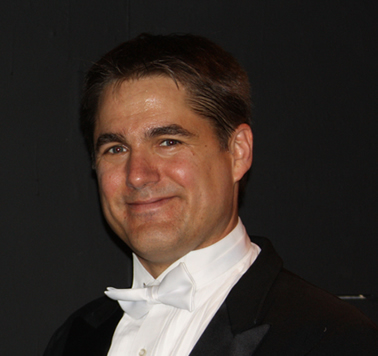There are few more adventurous performing arts organizations than the two components of the Raleigh Civic Symphony Association – the Raleigh Civic Symphony and its closely allied Raleigh Civic Chamber Orchestra. These outfits tend to give concerts in pairs, within weeks of each other. And their programs are clearly not driven by any marketing department – there’s no “that would be death at the box office” consideration going on here when the music director decides what he thinks would be good things to play. The instrumentalists are adventurous, too, clearly embracing what conductor Peter Askim proposes – and no doubt working hard to master some of it, too, for unusual repertory is a highlight of these concerts. This reflects a long tradition with the RCSO and RCCO, instilled by the late Randolph Foy, whose reputation preceded his appointment in Raleigh: he was “that guy” who played “all that modern stuff” at the NC Governor’s School for so very long before he came here. Askim picked up that banner with a vengeance: this season he concludes his “20 for ’20” program in which there are new works – premieres, no less – on every program – starting four years ago and concluding next spring. What other orchestra or ensemble ’round here can claim anything like that?!*
It was a very busy Sunday afternoon in the capital, music-wise. Downtown, Siegfried was navigating his way to Brünnhilde’s rock while Duke’s Ciompi Quartet played an attractive program at the NCMA (parts of which we’d reviewed last month). An hour later, over at Saint Mary’s, the Paderewski Festival offered its grand finale – and that was just what was going on in music. (We are richly blessed here to have so very much fine music from which to choose.)
Amid all this, the RCCO’s program offered special attractions. It began with a fascinating two part set of Music for Small Orchestra by Ruth Crawford Seeger (1901-53; and yes, she was Pete‘s step-mother). The music this work suggested was that of Charles Ives, known as one of America’s greatest iconoclasts. If that’s an epithet, and if it’s not gender-specific (it isn’t), then we may hurl it at her. Askim and the orchestra played a series of excerpts to orient the audience – when we heard them the next time, they overlapped in a manner that suggested aquatic layering with turbulence in every part of the pond – as the director stated, think 6 against 5 against 4…. The effect, overall, was magical and warmly received, too, by an audience that had clearly come to trust the work these fine musicians are presenting on a regular basis in Stewart Theatre at NCSU. And if parts of it suggested haunting similarities to Ives’ “Central Park in the Dark,” that’s not a bad thing in the least.
There followed this concert’s RCCO-commissioned premiere – a work by Duke-based James Budinich (b.1990) [mis-]titled “Tiled Fields” (he amusingly explained that “tilled” is what he had in mind). It fit in very nicely with the opener, and as in that case, Askim and his players provided some useful introductory samples. There’s a good bit of layering herein, but it’s very skillfully achieved, and the performance was so good it was a snap for listeners, hearing the music for the first time (to state the obvious), to grasp and appreciate the many different things that were going on. I’ll pay both of the pieces on the first half the highest compliment: these are worth hearing again, and soon! Budinich’s was accorded a big reception, most deservedly so.
Part two transported us to a whole ‘nother world – the world of French impressionism, particularly as influenced by the Symbolist poet Paul Verlaine. The end-goal was Claude Debussy’s thrice-familiar “Clair de lune,” but the path led through Gabriel Fauré’s four part Masques et Bergamasques, Op. 112 – with the serene Pavane, Op. 50, appended – and then Amy Beach’s frisky “Bal masqué,” Op. 22, a classic send-up of the Viennese waltz that preceded by nearly 30 years Ravel’s post-war “obituary” on the subject (“La Valse”). This music is far lighter: in it, Beach outfoxed Old Strauss and Strauss the Younger, too – and the performance by the members of the RCCO was one of the highlights of the afternoon. The concluding Debussy reflection on moonlight brought us serenity at the end as a notable cap to a very enjoyable afternoon with an admirable ensemble. And admirable it was, indeed, for these are some hot-shot players – very, very fine winds, good horns, notable trumpets, solid strings with special strength in the violas and cellos, and Winifred Garrett, one of our region’s most important harpists, helmed and charmingly introduced by Askim, who has a notable gift for gab. What’s not to like?
PS Did you note the presence of two women among the composer roster?
The RCSO appears on Nov. 24 in the same venue, and with three distinguished guest vocalists. Click here for details, including the program.
*Aside from college/university-based new music ensembles….
Note appended 11/13/19: It has been brought to our attention that we should have highlighted the following paragraph from the RCSA website (cited in the opening sentence, above) that addresses the relationship of these orchestras to the NCSU Department of Music:
“Based at North Carolina State University (NCSU), and co-sponsored by the Department of Music and the nonprofit organization Raleigh Civic Symphony Association (RCSA), the Raleigh Civic Symphony and Raleigh Civic Chamber Orchestra are amateur orchestras comprised almost equally of volunteer community musicians and college students. The orchestras are unique in their ongoing commitment to perform contemporary and traditional classical music presented in a thematic context, connecting orchestral repertoire to larger ideas in creative ways.”











